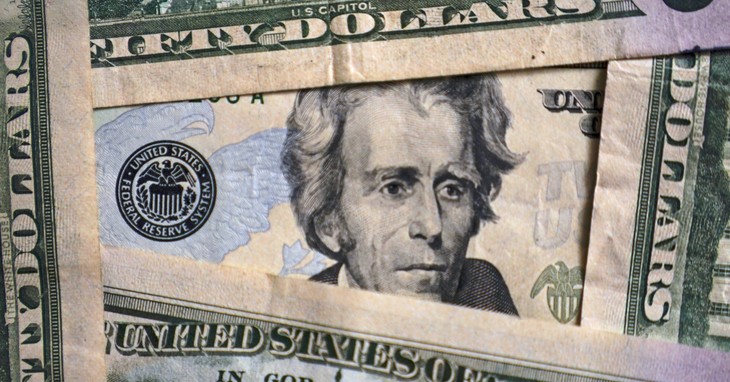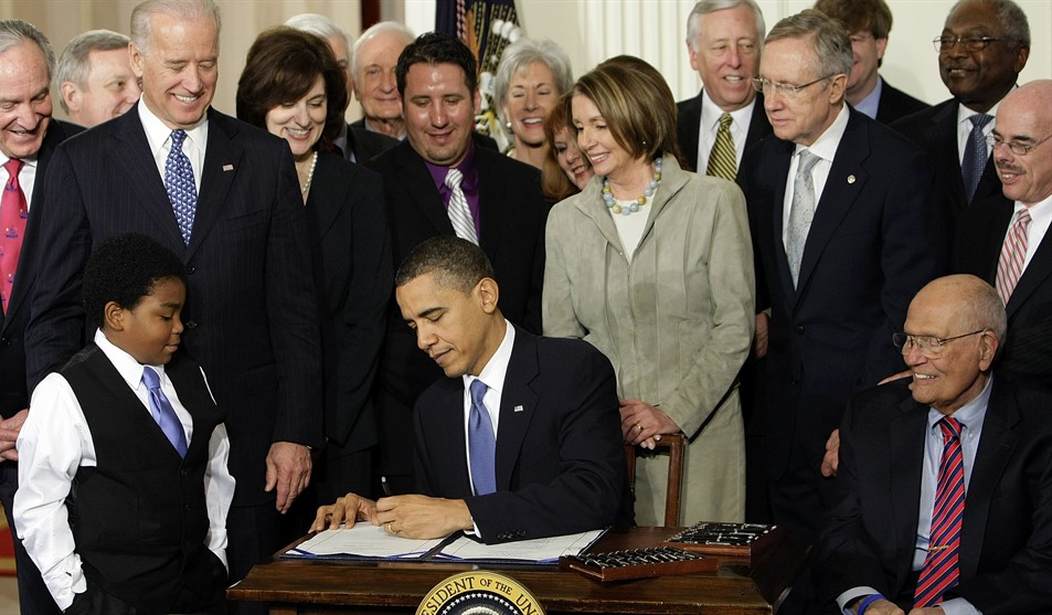President Joe Biden announced an executive order Wednesday, canceling student debt repayment for millions of Americans. The order cancels $10,000 of student loan debt for families with income less than $125,000 annually. Additionally, the order puts a freeze on student loan repayment until January, a pandemic-era policy that was set to expire later this month.
My colleagues at RedState have provided extensive analysis of the policy. Brandon Morse wrote about how taxpayers are on the hook for the debt while Bonchie called Biden’s executive action an impeachable offense.
There is one detail provided by the Biden Administration that should not be left out of the debate: Debt cancellation will only be provided to borrowers who took out federal loans, not private ones.
We cannot and should not talk about student loans, forgiveness or otherwise, without discussing the implications of the Affordable Care Act (ACA), commonly known as Obamacare. Biden knows the legislation well, as he was Vice President when it was signed in 2010 and since then he has campaigned upon it, endlessly. It’s ordinary Americans that are in the dark about what ACA, and the little-known provision passed in reconciliation, did to student loans, thus omitting it from the conversation more often than not:
The taxpayer is both the creditor and the guarantor on student loans.

Before the ACA, more than half of all student loans originated with private lenders. These loans were backed by the government and in cases of default or the borrower’s death, the taxpayers would foot the bill on the guaranteed loans. The number of guaranteed, private loans was in steady decline due to the 2008 financial crisis, falling from 81 percent in 2008, to 51 percent in 2010, but still made up the majority share of the market.
The ACA provisions, striking the Federal Family Education Loan (FFEL) program changed the lending system, making it so all federal loans originate with the government, not private banks. Do banks still offer private loans for education? Yes, but it doesn’t make up much of the market anymore, nor the debt. The overall number of borrowers taking federal loans increased by 43 percent between 2008 and 2020, while the amount of outstanding debt per borrower increased by 83 percent.
In, 2010 the Congressional Budget Office told us originating the loans federally would provide 61 billion dollars in savings for the government, over 10 years. This was the rationale purported at the time, it was cheaper for the government to act as a lender than to pay banking institutions to do so. Plus they could borrow the money from the student loan program at 2.8 percent interest, and lend it at 6.8 percent. The government sells the taxpayer money to students at a four percent markup. A portion of that so-called savings from not paying the banking fees, about nine billion, was routed to fund Obama-era healthcare initiatives.
This is where we can get into semantics over if the government “federalized” student loans or just thrust themselves into taking over the bulk of the lending market using public funds. We can split hairs over if the purported savings funded Obamacare or just other Obama health initiatives like community healthcare centers. Regardless of what lexicon we use, the numbers remain the same.
Investopedia reports,
Prior to the administration of Bill Clinton, the federal government owned zero student loans, although it had been in the business of guaranteeing loans since at least 1965. Between the first year of the Clinton presidency and the last year of George W. Bush’s administration, the government slowly accumulated about $670 billion in student debt.
Those figures have exploded since 2009. The U.S. Department of the Treasury revealed in its 2020 annual report that student loans accounted for nearly 20% of all U.S. government assets.
The outstanding federal loan balance has ballooned to about 1.75 trillion dollars, currently.

Yes, fiscal conservatives are outraged at the “cancelation” of student loan debt as it gets passed onto the taxpayer. Americans are rightly concerned about the national deficit along with rising inflation. Republicans are annoyed at the suspicious timing of this announcement as an election cycle antic to increase partisan favorability.
Biden and his Obama-era policies put Americans on the hook for the debt a long time ago and it was taxpayer money being loaned out, to begin with. The American taxpayer became the lender and guarantor, then those loans took over the market, and borrowed debt increased per person. All this, without any collateral, co-signer, or showing the ability to repay. It is clearly bad lending practice where the taxpayer assumes all liability.
These fiscal practices are subprime lending by any other name. Too often the debate around student loans is merely finger-pointing at each other. From blame for the student who took the loans to counter-points about the privilege of those who faired economically better. Yet, there is only one name who owns this entire crisis from inception and it’s Joe Biden. The White House announcement was just the other boot dropping on the 2008 lending crisis; they baited the student loan trap themselves over a decade ago.
The solution will not be found in the “to forgive or not to forgive” debate— it can only be remedied through common-sense lending reforms, by bringing back legitimate financial institutions, and creating lending practices that safeguard the lenders, the borrowers, and the American public, instead of leaning on taxpayers as the subprime lending piggy bank.













